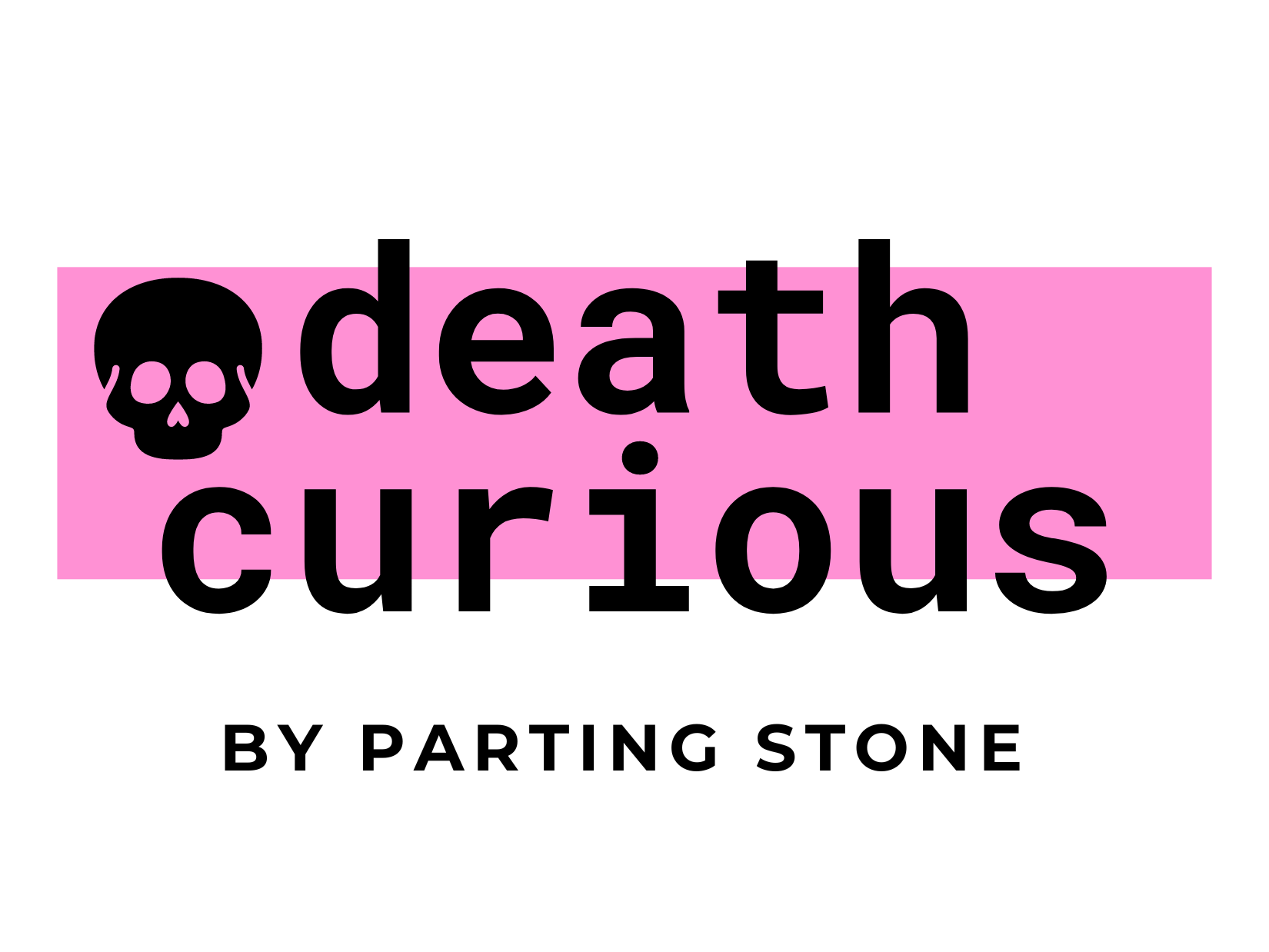From previous articles in this series know that many of today’s consumers across generations are focused on making purchases that prioritize eco-friendliness and environmental concerns, especially younger generations who will make up the majority of death planners in the next few decades. A previously cited study by IBM Institute breaks down what is driving consumer choices today and reveals that 40% of consumers across all sectors and industries are purpose driven- i.e. making purchases based on ethics, beliefs, and personal values like eco-consciousness. Nowhere is this fact more apparent in death care than in the rapidly rising interest and enthusiasm for green burial in recent years. Let’s dive into the real environmental impact of green burial and how it compares to other disposition methods.
In fact, according to data from NFDA, 60% of funeral planners are interested in green burial as of 2022, up from 55.7% in 2021. However, there are other studies that cite even higher interest in green funeral services. A 2021 study by Kates Boylston Publications found that a whopping 84% of those surveyed said that they would consider green burial if those services were offered at a funeral home.
That data means that a vast majority of your families this year would be likely to want green burial services over traditional services if they were offered the choice. And it makes sense that funeral care is no exception to these growing green statistics, as a growing number of people are choosing disposition methods according to personal beliefs, as is outlined in research from Choice Mutual Insurance. Since many people today believe in being environmentally friendly, the low environmental impact of green burial means that it aligns with funeral planning choices made based on personal beliefs. There is even more evidence to support the need for more green burial services on the Green Burial Council’s website, which cites multiple sources that show the growing interest in green burial is continuing to rise across platforms and surveys. Additionally, another Choice Mutual article reveals that, since younger generations are more interested in eco-friendly death options, and are already the demographic that is best educated about green burial, interest in and numbers of green burials are only set to rise in the US in coming years.
These numbers mean that it’s important for every funeral business to work towards offering certified green burial options as soon as possible, in order to best serve families both today and tomorrow.
What is Green Burial?
Green burial is a cleaner burial alternative to traditional burial with embalming. There are a few terms that have circulated discussions around more eco-conscious burial, like natural burial and hybrid burial that could all fall into a broader category of more eco-conscious death practices. The Green Burial Council is a non-profit organization with a mission to inspire and advocate for environmentally sustainable, natural death care through education and certification. The GBC educates the public and the death care profession about environmentally friendly burial practices, and certifies businesses and cemeteries as official green burial services and partners. According to the GBC’s website, the official criteria for a green burial is as follows:
- Caring for the dead with minimal environmental impact that aids in the conservation of natural resources
- Reduction of carbon emissions
- Protection of worker health
- Restoration and/or preservation of habitat
This means that green burial cemeteries and providers all seek to bury without impediment. Green burials use no embalming, no liners or vaults, and only certified biodegradable containers, whether caskets, shrouds or nothing at all to house the body. Green burial requires chemical-free body preservation techniques like dry ice and air conditioning, so no chemicals are entering the body: “Bodies prepared for green burial are not embalmed with chemicals. Natural and chemical-free refrigeration techniques, such as use of dry ice, Techni-Ice, cooling blankets, air conditioning, fans, and open windows in cool weather are all effective methods of slowing down the decomposition process until burial.” Many green burials also forego plastic body bags, electric elevators for lowering bodies, and even electric refrigerators. The deceased is not buried in jewelry or synthetic clothing, and often green burial cemeteries can hold far more deceased in smaller amounts of land than traditional cemeteries. These efforts all greatly reduce the emissions, worker health, habitat destruction, and overall environmental impact of green burial.
What is the Environmental Impact of Green Burial?
Since green burial typically means no body bag, no embalming, the most ecologically friendly biodegradable body covering possible, as well as no use of an elevator, graves dug by hand, only natural monuments and markers, only biologically degradable clothing, no jewels, no maintenance of burial grounds, and more people buried per graveyard, it has a significantly lower environmental impact than traditional burial, and even cremation. Learn more about how the real environmental impact of green burial stacks up to other popular disposition methods by downloading the free ebook “The Real Eco-Impact of Disposition Methods”

In fact, whereas traditional burial produces a large amount of carbon that’s distributed into the atmosphere and environment, green burial practices can actually “sequester” carbon, meaning the process actually absorbs more carbon from the environment than it contributes. The Green Burial Council’s website explains that, “Traditional burial produces 250 lbs. of carbon, whereas green burial sequesters 25 lbs. of carbon. This assumes a fifty-year life cycle of the plot, that traditional burial uses a concrete burial vault, and green burial has no maintenance (mowing, fertilizing, watering, etc.). To put this in context, this difference is equivalent to the carbon produced by an average American’s driving over a three-month period.”
Additionally, according to a non-industry source, “Natural burial in a biodegradable coffin reduces carbon emissions by 50 percent compared with traditional burials, according to the Natural Death Center.” Since materials usage and pollution aren’t a huge environmental impact with green burial, the biggest areas of concern for impact and pollution with green burial are soil and water. Not only are these the biggest risks for impact and pollution, soil and water are also two very important components to consider in order for the science behind how green burials to work.
Green Burial and Soil
Green burials occur at a depth of 3-4 feet, at a level in which soil has more aeration and access to microbes and insects that assist in the natural decomposition process. According to the Green Burial Council’s website on the science of green burial, “The basic premise of green burial is that the body is buried at the optimum depth in soil capable of binding organic material while promoting rapid, uninhibited, aerobic decomposition, resulting in the decay that creates the basis for fertile soil. Burial at 3-4 feet rather than 5-6 feet places the body at a depth that allows greater oxygen flow, which in turn feeds bacteria, resulting in more rapid, efficient decomposition. In addition, at a depth of 3- 4 feet, beneficial carrion beetles burrow in to aid the process”
Land usage, waste, and deforestation is also less of a concern with green burial than with traditional burial. Due to a more intentional use of land in general, green burial sites have the potential to be used repeatedly, and to disturb the natural ecosystem less. An excerpt from an article on the Science of Green Burial by Lee Webster on the Green Burial Council’s website explains that, “By burying at shallower depths, land areas such as forests and wooded areas previously untenable for use by conventional cemeteries can be utilized. Green burial graves are less densely situated, allowing more space around each body to lessen competition of decay agents. The expectation is that with more efficient use of space, the land will remain intact with less disturbance, keeping nature in balance. An added possibility is that these spaces may be used for future burials as necessary.”
Green Burial and Water
The shallow level of burial involved in green burial, coupled with the lack of harmful chemicals and non-renewable resources used to treat the body means that water contamination is at very very low risk. According to The Science of Green Burial ebook, “There is little evidence of microbiological contamination of groundwater from burial…Microorganisms involved in the decay process (putrefaction) are not pathogenic.”[…] No [ground water] contamination has been reported from or near any green cemeteries in the US, Canada, Great Britain or Australia since their inception in 2003.”
Although some infectious diseases like Ebola can be transferred to a living person from a dead body, there is no empirical data to suggest that diseases are a risk for water contamination from unembalmed buried bodies. In fact, while data around buried bodies and water pollution is limited, the data that is available suggests that non-organic materials like vaults, caskets, and decomposing embalming chemicals are more of a threat than a naturally decomposing body. The Green Burial Council’s website on the science of green burial explains,
“The potential for contamination of drinking water due to body decomposition, though possible and frankly expected if best management practices are not followed, is not definitively substantiated by studies at this time. Areas adjacent to conventional cemeteries, especially historical cemeteries, have been reported to have elevated results when core soil and water specimens were tested for contaminants in a handful of cases.
But there is no evidence that these findings are attributable to body decomposition processes. Due to the types of contaminants found, it is highly likely that the problems were caused by leachate from casket, vault, or embalming fluid or other incidental materials. No contamination has been reported from or near any green cemeteries in the US, Canada, Great Britain or Australia since their inception in 2003.”
How the Environmental Impact of Green Burial Stacks Up
Green burial is an excellent option for families wishing to reduce the environmental impact of their disposition. Using significantly fewer fossil fuels than cremation, and having at least a 50% smaller impact in all areas of emission and pollution than traditional burial, green burial’s growing popularity makes sense among increasing numbers of death planners seeking environmentally friendly options.

Each year the Green Burial Council certifies more cemeteries, funeral homes, and funeral products that demonstrate compliance to the green burial standards outlined by their organization. Working with officially certified green burial suppliers and businesses when offering green burial services to your families is important, because of growing instances of greenwashing among suppliers and manufacturers of things like embalming chemicals and caskets. An uncertified company’s environmental claims might not be backed up by material safety data sheets or life cycle analysis. Since data across platforms shows that more and more families are looking for greener alternatives to traditional funeral practices, looking into certified green burial cemeteries and providers that your funeral home can partner with will go a long way towards serving your families today and tomorrow.
To learn more about how green burial compares to other disposition methods in 8 impact categories, and how to begin offering green burial to your families, click below to download the full ebook guide “The Real Eco-Impact of Disposition Methods”


